Aurora Borealis, also known as the Northern Lights, is a mesmerizing natural phenomenon that illuminates the night sky with vibrant colors. While typically observed in high-latitude regions near the North Pole, it has recently become visible in some parts of the world. In this article, we explore the causes behind this rare occurrence. Stargazers around the world were treated to an extraordinary celestial event recently as an extreme solar storm triggered dazzling auroras—commonly known as the Northern Lights or aurora borealis. These mesmerizing displays of light have captivated humanity for centuries, and the recent surge in solar activity provided a rare opportunity to witness their brilliance.
Table of Contents
What Are the Northern Lights?
The Northern Lights result from the interaction between solar particles and Earth’s magnetosphere. When charged particles from the sun—known as solar wind—collide with our planet’s magnetic field, they excite nitrogen and oxygen molecules in the upper atmosphere. As a result, these molecules release photons of light, creating the stunning auroras.
The Sun emitted two strong solar flares on May 10-11, 2024, peaking at 9:23 p.m. EDT on May 10, and 7:44 a.m. EDT on May 11. NASA’s Solar Dynamics Observatory captured images of the events, which were classified as X5.8 and X1.5-class flares. https://t.co/nLfnG1OvvE pic.twitter.com/LjmI0rk2Wm
— NASA Sun & Space (@NASASun) May 11, 2024
The Solar Storm of 2024
The recent solar storm, classified as an “extreme” geomagnetic storm at the G5 level—the highest on the National Oceanic and Atmospheric Administration’s scale—surpassed initial forecasts. It became the strongest solar storm in two decades, surprising scientists and delighting skywatchers worldwide. The last extreme storm of this magnitude occurred in October 2003, causing power outages and transformer damage.
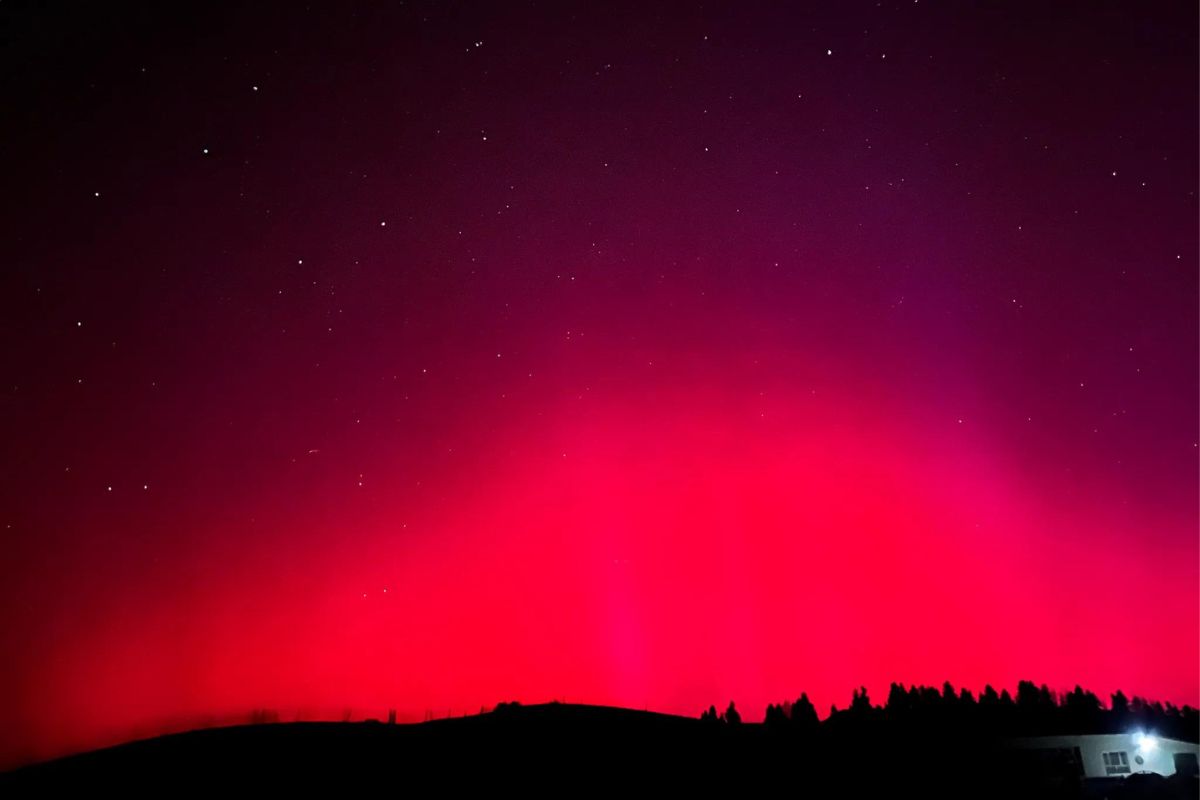
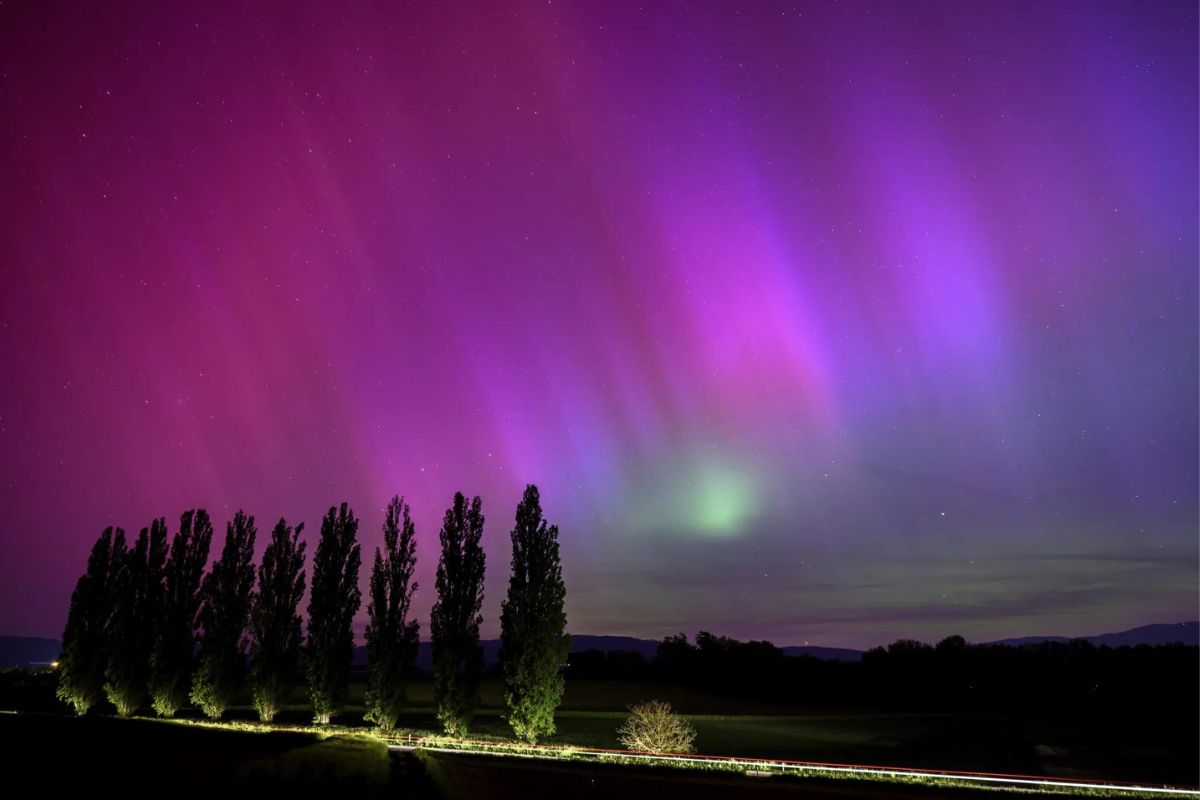
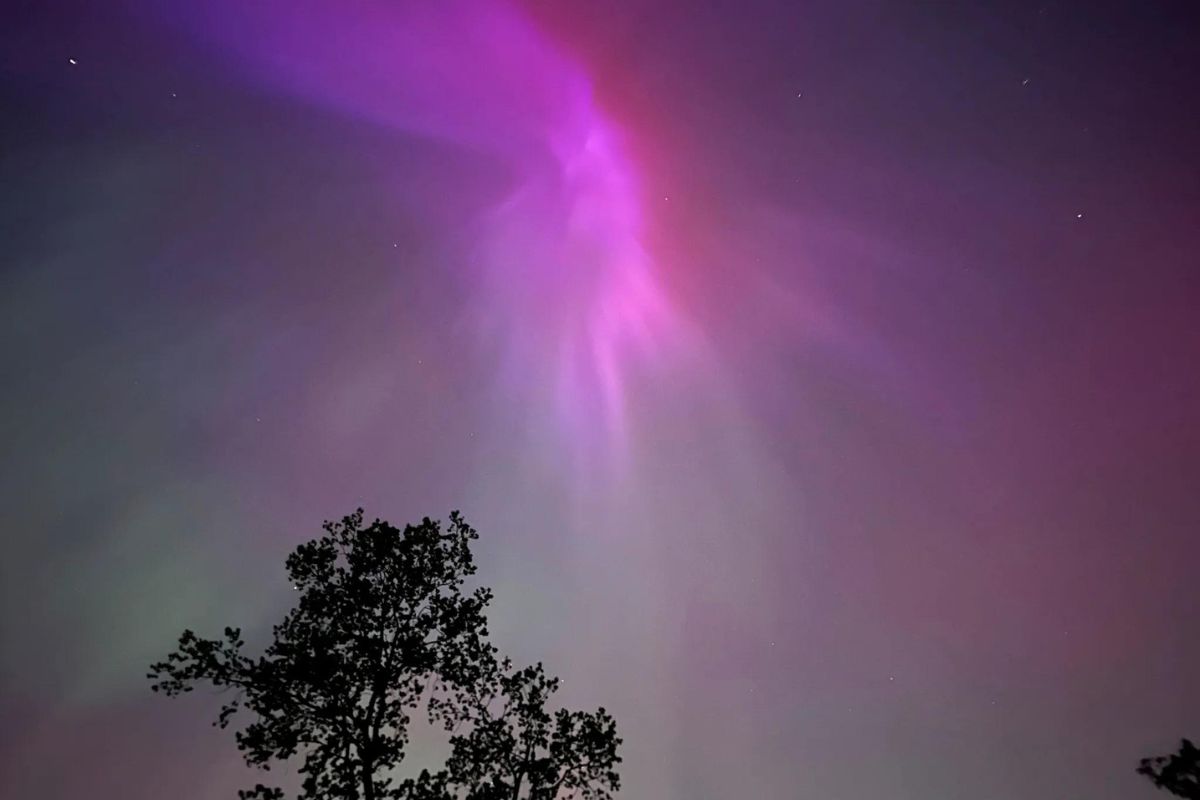
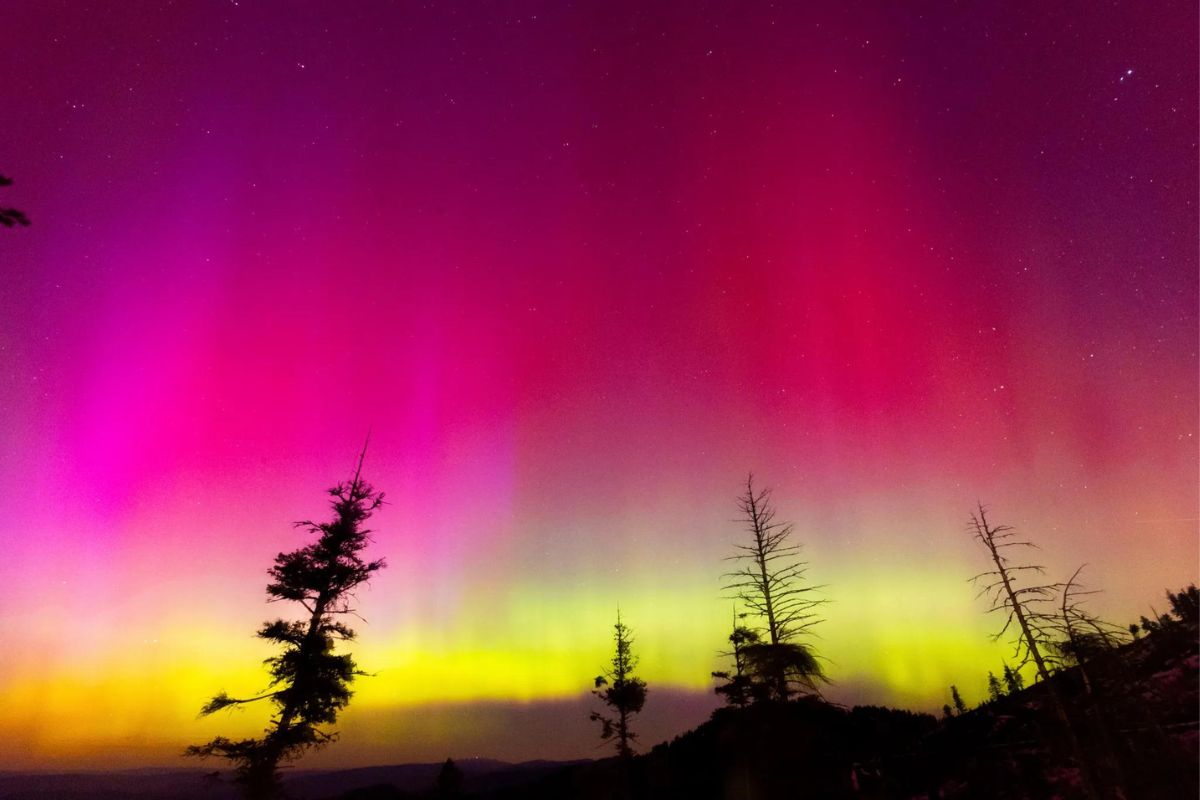
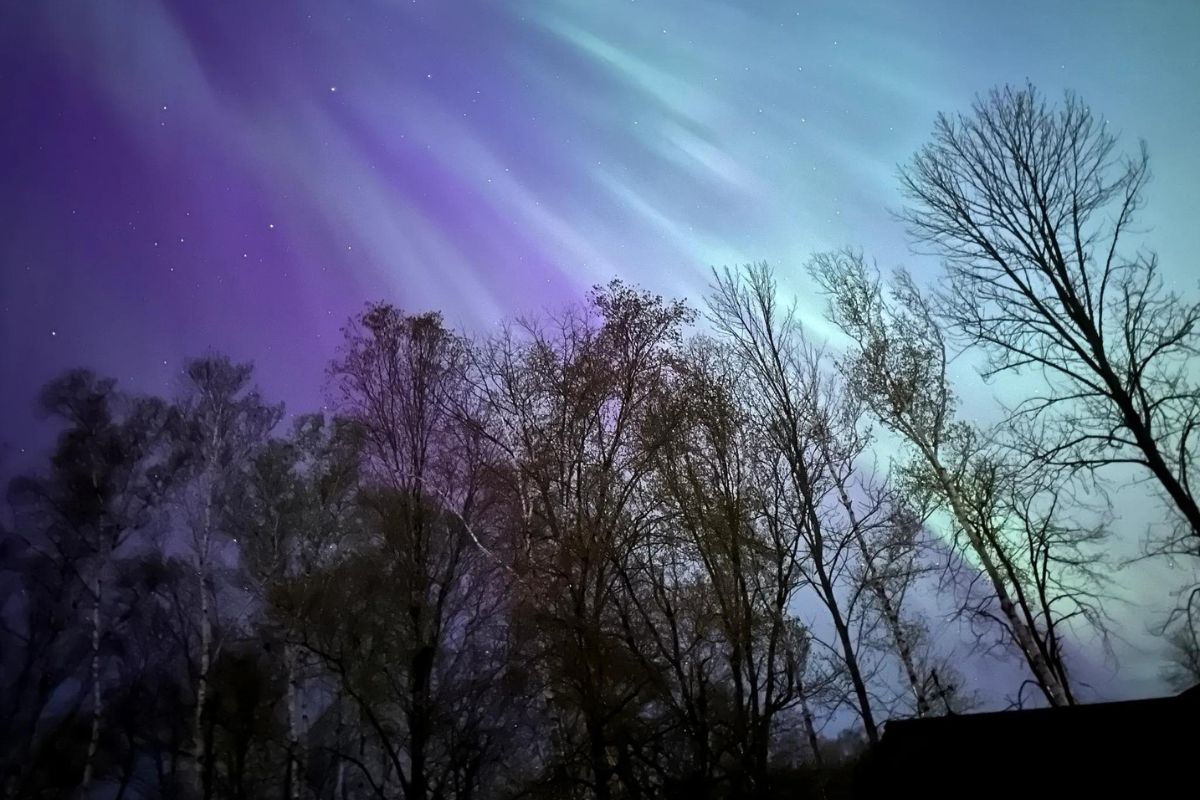
Recent Solar Flares
Canadians and others across the globe were treated to an aurora borealis display Friday night due to a severe geomagnetic storm. On May 10-11, 2024, the Sun emitted two strong solar flares, classified as X5.8 and X1.5-class flares. These intense bursts of energy contributed to the current solar storm and subsequent Aurora Borealis visibility. The northern lights were visible across Canada and may be visible again Saturday night. Green, pink, yellow and blue vistas were photographed throughout the night on May 10 and 11.
Global Auroras
During this solar storm, auroras were visible across large swaths of Europe and North America, reaching as far south as Florida in the United States. Here are some breathtaking moments captured by photographers:
- Middleton, California: Northern lights illuminated the night sky along a highway north of San Francisco.
- Newburyport, Massachusetts: The auroras danced over Plum Island and the mouth of the Merrimack River.
- Between Minneapolis and Baltimore: Passengers on a flight witnessed the northern lights through their window.
- Estacada, Oregon: The night sky glowed with vibrant colors.
- Markville, Minnesota: St. Croix State Forest provided a stunning backdrop for the auroras.
- Portsmouth, New Hampshire: Northern lights shone over a quaint house.
- Whitley Bay, England: St. Mary’s Lighthouse witnessed the celestial spectacle.
- Schierke, Germany: The Brocken mountain peak was bathed in auroral light.
- Edinburgh, Scotland: The National Monument of Scotland stood illuminated.
- London, Canada: People paused along a country road to marvel at the auroras.
Solar Storms and Sky Illumination
Aurora Borealis occurs when charged particles from the Sun interact with Earth’s atmosphere. Here’s how it happens:
- Solar Storms: The phenomenon is triggered by solar storms, specifically solar flares and coronal mass ejections (CMEs). These events release a surge of charged particles into space.
- Sunspots and Material Ejection: Currently, a cluster of sunspots in a dark and cool region on the Sun is ejecting material approximately every six to 12 hours. This ongoing solar activity is responsible for the recent visibility of Aurora Borealis in unexpected locations, including India.
- Interaction with Earth’s Atmosphere: When these charged particles collide with nitrogen and oxygen molecules in our atmosphere, they create a stunning light display. The colors—blue, pink, and purple—result from this interaction.
Aurora lights witnessed in India
Aurora lights were seen in Hanle, Ladakh, providing insight on incredible geomagnetic storm
Stable Auroral Red Arcs (SAR arcs) captured from Hanle Dark Sky Reserve, UT Ladakh, on 11.05.24 at 0100 hrs. It is a very rare phenomenon.#IADN pic.twitter.com/ZfYvw22OaV
— News IADN (@NewsIADN) May 11, 2024
Adverse Effects and Solar Flare Intensity
While Aurora Borealis is awe-inspiring, it also has some adverse effects:
- Electrical Outages: The increased solar activity can disrupt power grids and cause electrical outages.
- Navigation Systems: The charged particles interfere with navigation systems, affecting both air and sea navigation.
- Network Blackouts: Mild network disruptions may occur due to the interaction between solar particles and Earth’s magnetic field.
Conclusion
As we marvel at the beauty of Aurora Borealis, let’s appreciate the cosmic dance between our Sun and Earth. While the phenomenon may be fleeting, its impact on our planet’s magnetic field and technological systems is a reminder of the interconnectedness of our solar system.

















